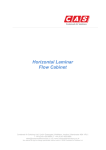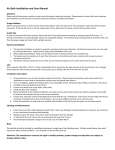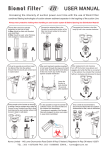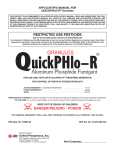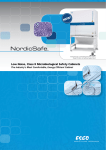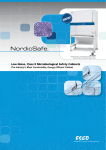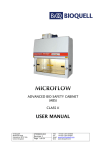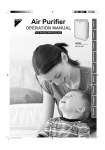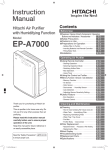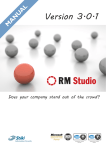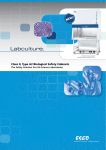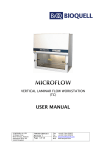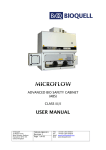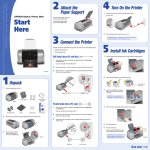Download Class 1 OM Manual (2010) Rev B
Transcript
BioMAT ® 1 Safety Cabinet Section Description Section 1 Your Manual Section 2 Using your Cabinet Section 3 Cabinet Control Panel Section 4 Filter Replacement Section 6 Service & Spares 1.1 1.2 1.3 1.4 1.5 1.6 1.7 General Description Quality Assurance/CE compatibility Cabinet Siting Installation Avoiding Disturbances Technical Data Your Manual 2.1 2.2 2.3 2.4 2.5 2.6 2.7 2.8 Switches & Indicators Start Up Procedure Shut Down Procedure Cleaning Procedure Fumigation & Formalin Quantities Fumigation Procedure Airflow Measurements Ultraviolet Radiation 3.1 3.2 3.3 3.4 3.5 Display Alarm Circuits Electrical Protection Fan Speed Control Engineers Menu 4.1 4.2 4.3 Re-circ HEPA Filters Exhaust HEPA Filter General Notes 6.1 6.2 6.3 6.4 Service Schedule Spares List Drawings (attached) Wiring Diagrams (attached) General Description – 1.1 Your BioMAT 1 Microbiological Safety Cabinet has been designed to provide optimum performance for operator protection. Using the latest in microprocessor and fan technology, it is designed to exceed the performance requirements of the European Microbiological Safety Cabinet Standard EN12469:2000. The safety cabinet carcass and all seals are maintained under negative pressure ensuring air cannot leak out during normal operation. Class 1 Safety Cabinets offer a high level of operator protection; they ensure any aerosols generated within the cabinet are filtered via high efficiency filtration (HEPA) prior to being dispersed back into the laboratory or to atmosphere. Operator protection is provided by a constant inflow of air through the working aperture of the front screen. The Class 1 Microbiological Safety Cabinet can be supplied as standard in either of the following two modes: Ø Re-circulating Type – Exhaust air from the safety cabinet is passed through two high efficiency filters (HEPA) before being released back into the laboratory. The exhaust air is made up of 100% of the total air volume handled by the safety cabinet. Ø Exhaust Type – Exhaust air from the safety cabinet is passed through a high efficiency filter (HEPA) before being extracted to atmosphere through a fan assisted extract system. The exhaust air is made up of 100% of the total air volume handled by the safety cabinet. Quality Assurance – 1.2 Although fully tested before leaving our factory as part of the ISO 9001:2008 Quality Assurance Programme, the specified performance will only be maintained if your cabinet is sited correctly and regularly serviced. CAS can only accept responsibility for correct functioning of your cabinet if: - Ø The Safety Cabinet is correctly sited in the laboratory to avoid any adverse conditions within the room that may affect the level of operator protection. Ø It has been installed and commissioned by CAS trained personnel or approved CAS agents. Ø Extension, modification, relocation, repairs or other maintenance is carried out by CAS personnel or persons authorised by CAS or, in the case of electrical work, by qualified electricians. Ø In the case of repair or maintenance, replacement parts supplied by CAS must be used. Ø The electrical installation surrounding the unit and to which it is connected comply with the latest IEC regulations. Ø The unit is used and maintained in compliance with the instructions contained in this manual. CE Declaration of Conformity CAS declares that the equipment supplied conforms to the following CE directives— Machinery 2006/42/EC Electro Magnetic Compatibility 2004/108/EC Low Voltage 2006/95/EC Cabinet Siting – 1.3 The siting of your Safety Cabinet is extremely important. Air currents and the movement of people in the laboratory can adversely affect the performance. Safety Cabinets should be sited away from; Ø Doors and windows which open Ø Draughts caused by ventilation and air conditioning units Ø Pedestrian traffic routes Ø Other safety cabinets or fume cupboards Ø Adjacent fridge & Incubator doors These points are of particular relevance to class 2 safety cabinets. The diagram shown below indicates some suggested locations for the correct siting of safety cabinets and highlights some situations which should be avoided. 3 4 SUPPLY GRILLE 1 2 HORIZONTAL LAMINAR FLOW Position 1 - An acceptable site not affected by disruptive air currents Position 2 - Well sited Position 3 - Poorly sited if windows open – If not it should be a safe distance from the cabinet opposite. Position 4 - Poorly sited – can be affected by air currents from the opening door, through traffic and the horizontal laminar flow workstation sited directly opposite. Installation – 1.4 Safety Cabinets are sophisticated items of equipment containing delicate filters which require expertise in their safe handling and installation into laboratories. For exhaust type safety cabinets the exhaust ductwork route should ideally be surveyed and ductwork installation be carried out by qualified engineers as it forms an integral part of the system relating to the overall performance of the cabinet and is required to conform to various safety standards. A poorly installed cabinet may compromise the protection provided to both personnel and work being handled and may present a hazard to other occupants of the building and the public. · Make-up Air It is important that any make-up air compensating for the air exhausted from the safety cabinet does not cause draughts to the discomfort of the laboratory staff or detriment of the cabinet performance. Air supply diffusers should be positioned more than 1500mm away from the front of the safety cabinet and have a maximum velocity of no more than 0.30m/sec. · Commissioning When any safety cabinet is installed, it is necessary to carry out a number of commissioning checks in order to ensure it is fully operational and that the performance on site satisfies the current standard BS EN 12469:2000. This includes measuring the airflows, testing the HEPA filters with a suitable challenge aerosol and a KI Discus Test (operator protection test) to assess the containment of the cabinet. CAS employs a team of fully trained installation and commission engineers to carry out all work necessary. This ensures that all new safety cabinets operate to the desired performance. · Site Surveys If you have any queries regarding the siting of your safety cabinets we will be only too pleased to arrange a site survey by one of our regionally based technical support staff. · Periodic Maintenance & Servicing To maintain safety cabinets at their optimum level of performance and to ensure lifetime operation, regular servicing is necessary. CAS provides a full servicing and maintenance scheme tailored to suit your individual needs. For more information on this please contact our service department on 0161-655-8860. Avoiding Disturbances – 1.5 300 The sketches below show recommendations for avoiding disturbances for both cabinet operator and safety cabinet performance. 1500 1000 Keep pedestrians away from the front of your safety cabinet Keep clear of adjacent wall Position well away from the door openings Bench 300 C 2000 1500 Position clear of bench opposite Keep clear of structural columns Keep well away from opposite wall Technical Data – 1.6 Cabinet Size 900mm 1200mm 1500mm 1800mm (w/d/h) (w/d/h) (w/h) 900/630/1250 895/625/700 710/200 1200/630/1250 1195/625/700 1010/200 1500/630/1350 1495/625/700 1310/200 1800/630/1350 1795/625/700 1610/200 Weight Typical Kg 150 200 250 300 Loading Capacity Work Surface Kg 50 50 50 50 m³/sec m³/sec 0.120 0.120 0.150 0.150 0.200 0.200 0.240 0.240 Pa Pa 350 500 350 500 350 500 350 500 HEPA Filter Data HEPA Type Efficiency @ 0.3µ H14 (EN1822) 99.999% H14 (EN1822) 99.999% H14 (EN1822) 99.999% H14 (EN1822) 99.999% Heat Gains Typical Exhaust Re-circ Watts Watts 150 150 150 150 220 220 250 250 Noise Typical Noise Level dB (A) <58 <58 <58 <58 Light Typical Lighting Level White Lighting Level St/St Lux Lux 900 800 900 800 900 800 900 800 Duct Connection (Exh) Mm 160 160 200 200 Volts AC Hz N/A kW A 230 230 230 230 50 Single 0.18 3 230v /13 Amp 50 Single 0.18 3 230v /13 Amp 50 Single 0.25 5 230v /13 Amp 50 Single 0.32 7 230v /13 Amp Dimensions External Dimensions Internal Dimensions Opening to Work Area Air Volumes Typical Exhaust Air Volume Re-circ Air Volume Pressure Drop Typical Exhaust Clean Filters Exhaust Dirty Filters Electrical Data Typical Voltage Frequency Phase Power Consumption Current Internal Socket(s) Your Manual – 1.7 This user manual has been prepared to provide a basic operating and maintenance instruction. It is intended to supplement existing in-house procedures and codes of practice, and not to replace them. If further advice is required on the use or maintenance of this equipment, the staff of Contained Air Solutions Ltd. will be pleased to assist wherever possible. Switches & Indicators – 2.1 The diagram below shows a typical control panel membrane layout for the BioMAT 1 Safety Cabinet. B ioM A T1 0 1 C L A SS1M IC R O B IO L O G IC A LS A FE T YC A B IN E T C O M P L IE SW IT HB SE N1 2469:2000 DESCRIPTION LEGEND AIRFLOW SA FE BioMA T 1 COLOUR FUNCTION A – Cabinet Operation Green Starts / Stops power supply to fans and control circuits. B – Lights Yellow Controlling power to lights. C – Gas Valve (Optional) Black D – Alarm Mute Red E – Fumigate Orange F – UV Lights (Optional) Blue 0 G – Key Switch 1 Grey Border To activate solenoid Gas Valve. Will only function when cabinet is in safe working condition. To mute audible alarm. Fault indication on display will remain until fault is rectified. To activate fumigation cycle. Will only operate when cabinet is switched OFF. To activate power to UV Lights. Will only operate when cabinet and lights are switched OFF. Key switch for supervisor control, used to prevent cabinet operation during fumigation. Start Up Procedure – 2.2 The following notes are for guidance where local laboratory instructions do not exist or are inappropriate. They should complement, not replace, existing codes of practice issued by your Laboratory Safety Officers. Ø Ensure power supply to the cabinet is switched on, as evidenced by the main display being illuminated. The key switch on the front of the cabinet must be turned to position ‘1’ = (ON). Ø Press the green switch ‘A’ on the control panel – this will energise the exhaust fan. The main display will show `AIRFLOW STABILISING` for 60 seconds, once airflows are settled the display will show `AIRFLOW SAFE`. On start up the audible alarm will sound until airflows are safe; this may be muted using the Alarm Mute switch `D’. NOTE: Should the airflows change significantly and fall out of the specifications laid down in EN12469:2000 the cabinet alarms will be automatically activated. Ø Switch on the interior lighting using switch ‘B’. Lighting can be activated when the cabinet is OFF; this can be used if loading or un-loading the cabinet with equipment prior to use. Shut Down Procedure – 2.3 Ø The work area should be cleared of any apparatus / equipment and cleaned in accordance with laboratory codes of practice. The cabinet should be left running for a few minutes to clear any residual aerosols. Ø Switch off the interior light using switch `B` Ø Switch off the cabinet using switch `A`. Ø Place the closure panel / Night door over the working aperture. Cleaning Procedure – 2.4 Regular cleaning is very important to prevent the build-up of dirt and hence potentially infectious material. Routine swabbing of work surfaces with 70% v/v IMS (ethanol) or IPA (Isopropyl Alcohol) is recommended. For cleaning the work surfaces, swabbing with a mild detergent in warm water is very effective. Phenolic or Cresolic disinfectants should be avoided as they may stain the white surfaces with a brownish colour. If they are used, any spillage should be quickly rinsed with clean water and mopped up with an absorbent tissue. Most of the quaternary ammonium compounds and the Glutaraldehyde based surface disinfectants are suitable. To facilitate cleaning of the work zone and the interior, the whole front screen / visor may be opened and lowered from the top, supported by the hinges at the lower edge. It is good practice to clean the inside of the viewing screen to ensure adequate visibility of the working zone. Always consult the Laboratory Safety Officer before carrying out this procedure. If Hypochlorites are used to clean the stainless steel interior of the safety cabinet they will initially cause rust spots and over time may lead to further damage. Warning Fumigation & Formalin Quantities – 2.5 When handling hazardous materials the air space inside the cabinet should be decontaminated regularly and always before servicing and following any spillages. Fumigation by formaldehyde gas is the recommended decontamination procedure for biological hazards although there are alternative methods available including VHP decontamination and Ozone decontamination. To facilitate the fumigation a sequence has been incorporated in the cabinet controls, this is detailed under fumigation procedure. A convenient way of generating sufficient formaldehyde is to boil off Formalin (40% formaldehyde BP or equivalent) in a suitable vessel such as a formalin vaporiser. These are available from CAS. Always consult your Laboratory Safety Officer prior to fumigation of a safety cabinet. ** If in doubt ask ** Formalin Quantities The recommended quantity stated in BS EN12469:2000 on Page 40 Annex J, Part 2 is 60ml formaldehyde solution mixed with 60ml distilled water per cubic meter of cabinet volume. However this quantity is now considered in excess of that required to achieve a satisfactory kill. We have therefore produced the following table based on quantities employed by users of large numbers of Safety Cabinets. If you still consider that the quantities recommended in the British Standard are to be used, you may find on completion of the sterilisation cycle that high quantities of fluids containing formaldehyde are present in the cabinet. Cabinet Size 900mm 1200mm 1500mm 1800mm Formalin Distilled Water 15ml @40% 15ml 20ml @ 40% 20ml 25ml @ 40% 25ml 30ml @ 40% 25ml Fumigation Procedure – 2.6 Ø Switch off the cabinet fans by pressing the green button ‘A’ on the control panel. Ø For re-circulating type safety cabinets the fumigation extract kit (optional) should be fitted to the cabinet discharge and ensure that the manual damper is fully closed. For cabinets connected to a duct system proceed as follows: § Fill the formalin vaporiser with the correct amount of Formalin (see section 2.5 for quantities) and screw on the aluminium cap – finger tight, having checked the gasket in the cap is undamaged. If the vaporiser is free standing, place on the cabinet work tray, plug into cabinet internal socket and switch on. Now fit the closure panel / night door, if using a lightweight closure panel additional sealing tape will be required around the outside face to ensure no leakage during fumigation. § Now press the fumigation button `E’ and the display will show `FUMIGATION IN PROGRESS’. A countdown timer will be shown directly below in minutes e.g. `285 MINS`. Ensure all laboratory personnel are aware that the fumigation is taking place; appropriate warning notices should be put on all doors entering the laboratory and on the cabinet being fumigated. Warning Ø The cabinet should be left for a minimum of 6 hours, preferably overnight. Note: Once the ‘fumigate’ button has been activated DO NOT SWITCH CABINET ON until the cycle has been completed. Ø On completion the cabinet will display `FUMIGATION COMPLETE` and `READY TO VENT`. When ready, press the fumigation button to exit the cycle and then press the green button `A` to purge the cabinet of formaldehyde gas. For re-circulating type safety cabinets press the ‘fumigate’ button to complete cycle and open the manual shut-off damper on the fumigation adaptor kit (Optional) having first fitted the extract tubing and placed the discharge point in a location approved by the Laboratory Safety Officer. ** When fumigating a re-circulating type safety cabinet where venting is unobtainable, a mobile carbon filter unit may be required. ** Ø Switch on the cabinet and then remove the sealing tape. To avoid formaldehyde being drawn out of the cabinet remove the rubber bung when using a 100% sealing closure panel. Ø Within the first few minutes of purging, the majority of the formaldehyde gas within the safety cabinet will be removed. However due to the fact that formaldehyde adheres to the surfaces of the cabinet and within the media of HEPA filters, we recommend that the cabinet be run for between 4 and 6 hours before the cabinet is serviced or work re-commences. Ø Remove the (optional) fumigation kit from the cabinet discharge before commencing to use the cabinet. ** Any poly-formaldehyde residue in the vaporiser may be removed by heating with water containing a little mild detergent at neutral pH. General Note Other methods of generating formaldehyde and other methods of cabinet decontamination can be employed; prior to using alternative methods your Laboratory Safety Officer should be consulted. Contained Air Solutions will be pleased to advise if they are able, but a detailed knowledge of every technique cannot be guaranteed. If your cabinet is fitted with ports to allow fumigation using Vaporised Hydrogen Peroxide (VHP) please refer to the VHP equipment manufacturer’s manual for the correct application of this technique. Airflow Measurements – 2.7 It is recommended that the inflow airflow be checked regularly, i.e. weekly or monthly according to cabinet usage. A rotating vane type anemometer with a head diameter of about 100mm is considered satisfactory. On 1200mm wide cabinets, take 5 readings, namely one in each corner and one in the centre on the work area aperture. Readings should be not less than 0.70m/sec or greater than 1.0m/sec. Readings above 1.0m/sec may cause problems with containment, this may be checked by conducting a KI test. Anemometer positions for the 1200, 1500 & 1800mm size of cabinets are illustrated below. The results should be recorded to monitor cabinet performance over time. 1200mm BioMAT 1 1500 & 1800mm BioMAT 1 Ultraviolet Radiation (Optional) – 2.8 Ultraviolet Radiation (UV) lamps may be fitted as an optional extra; these can be fitted as new in our factory or retrofitted at a later date on site. If installed the cabinet will have1 or 2 (Depending on cabinet size) short wavelength Ultraviolet (UV) tubes emitting 254 nano metres fitted to the inside work area of the safety cabinet. As a safety feature the UV tubes are interlinked with the cabinet lights to prevent them being used when the cabinet is in use. Over time, the effective life of UV tubes is known to reduce; therefore we would recommend UV tubes are replaced on an annual basis to ensure maximum efficiency. Applications Many bacteria are quite resistant to UV Radiation, and may require prolonged exposure for sterilisation. Dry and/or protein covered organisms may be protected against UV and may be only slightly affected if at all. However, moist, vegetative cells without too much protein covering are killed with reasonable effectiveness after 3-4 hours exposure. Extreme care must be exercised when using UV radiation. Consult your Laboratory Safety Officer prior to use. Warning UV Radiation can cause burns to unprotected skin and it is very important not to look directly at the illuminated tubes with the naked eye. Display - 3.1 The cabinet display is located in the centre of the control membrane; it incorporates backlighting to ensure all signs can be clearly seen from the operating position. Typical display during normal operation shown below: AIRFLOW SAFE BioMAT 1 In the event of an alarm condition the display will clearly indicate the fault; this will remain displayed until fault is rectified. Typical display during alarm condition shown below: LOW AIRFLOW Should the cabinet produce an alarm condition it may be necessary to arrange for a Service Engineer to attend site, in such cases please contact our Service Department on 0161-6556183. Alarm Circuits – 3.2 There are three standard alarm circuits on the BioMAT 1 Re-circulating and Exhaust type Safety Cabinets. 1. INFLOW LOW ALARM Sensed by an accurate pressure sensor mounted on the main printed circuit board and connected via tubing to the sensing points within the cabinet body, this will sense low airflow caused by fan failure or filter soiling, and transmit the signal to the display meter on the front panel and alarm circuit. In the event the alarm is triggered the display will show `LOW AIRFLOW`, and the audible alarm will sound, this can be muted using the alarm mute button. 2. INFLOW HIGH ALARM Sensed by an accurate pressure sensor mounted on the main printed circuit board and connected via tubing to the sensing points within the cabinet body, this will sense high airflow and transmit the signal to the display meter on the front panel and alarm circuit. In the event the alarm is triggered the display will show `HIGH AIRFLOW`, and the audible alarm will sound, this can be muted using the alarm mute button. 3. FRONT SCREEN Front screen position is monitored by a micro-switch fitted to the front screen assembly. When opened the display will show `VISOR OPEN’ and an audible alarm will sound. This can be muted using the alarm mute button. ** The alarm circuit is activated each time the cabinet is switched on. It is important to ensure that the pressure tubing is not damaged or split where it is connected to the pressure sensor. The pressure sensor, in the event of inadequate airflow in either part of the system, will cause the alarm circuit to be activated with a flashing red indicator on the alarm mute button, an intermittent audible alarm tone, and the alarm system will clearly show on the display the fault. The audible alarm tone can be silenced by depressing the ‘alarm mute’ button on the control panel after which the red light will remain continuously lit until the correct airflow is reinstated or the cabinet is switched off. Electrical Protection – 3.3 Ensure the Safety Cabinet is isolated from the mains supply prior to opening access panels. Warning Fuses There are 11 fuses mounted on the printed circuit board to protect the electrical circuits of the cabinet. The cabinet controls are housed behind the front control panel which is secured with two screws located across the bottom edge. Once removed the control panel will hinge upwards to facilitate access to the main printed circuit board. For full details on fuse ratings and the circuits they protect please see the wiring diagram attached to this manual. Fan Speed Control – 3.4 The inflow fans can be adjusted via the engineer’s menu, please see section 3.5 for more information. To maintain optimum performance during routine planned maintenance it may be necessary to increase cabinet fan speeds to overcome filter soiling. This can be adjusted via the front control panel membrane using the Engineer’s Menu. It is important any changes to fan speeds must be made by a CAS service engineer or alternative competent service provider, failure to do this may result in the warranty being invalid. Warning Engineer’s Menu – 3.5 It is important any changes within the Engineer’s Menu be conducted by a CAS service engineer or alternative competent service provider; failure to do so may result in the warranty being invalid. Warning The buttons located on the front control membrane have a second function once access to the Engineer’s Menu has been gained. ** In order to gain access to the Engineer’s Menu the cabinet must be switched OFF ** STANDARD SWITCH PANEL ARRANGEMENT SOFT BUTTON ARRANGEMENT TO ENTER `ENGINEERS MENU` BUTTON 1 SHOULD HELD DOWN FOR >5 SECONDS TO EXIT `ENGINEERS MENU` BUTTON 1 SHOULD HELD DOWN FOR >5 SECONDS USE BUTTON 2 TO START / STOP THE FANS Engineer’s Menu Sequence LOW ALARM 40 Pa YES NO HIGH ALARM 80 Pa YES NO INFLOW FAN 65 % YES NO U.V. LIGHTING 060 MINUTES YES NO TIME ADJUST 14:54 YES NO EXHAUST SENSOR YES 20 Pa NO SERVICE TIMER YES RESET NO INITIALISE VALUE INITIALISE (0) YES Re-circ HEPA Filter (Air returned to room) – 4.2 Two HEPA filters are located on the top of the main body of the cabinet separated by a spacer section and held in place by four M8 filter bolts. IMPORTANT Cabinet must be decontaminated prior to changing any HEPA filters, see section 2.6 Only replace or examine filters if authorised to do so by the Safety Officer or the person in charge of the laboratory. To remove any filters wear disposable gloves, an apron, overalls and appropriate face covering, especially eye protection. Ensure the Safety Cabinet is isolated from the mains supply prior to opening access panels. Warning To remove filters, release bolts, lift module until filters and spacer section can be removed. Slide one filter forward and out and dispose of as recommended by site regulations, then remove second filter in same manner. To replace, first ensure that all surfaces have been cleaned and are free from matter. Remove new filters from their protective packing. Inspect all exposed surfaces for signs of damage. Any damage should be reported to the supplier immediately. Slide filters and spacer carefully into position. Tighten filter bolts, ensuring filters and spacer section are correctly positioned and gaskets are compressed to about half their original thickness. The filters and their gaskets should be tested for leaks by challenging with DOP or equivalent aerosol and scanning the surfaces with the probe of a forward light scattering photometer. Exhaust HEPA Filter (Air ducted to atmosphere) – 4.3 The HEPA filter is located on the top of the main body of the cabinet held in place by four M8 filter bolts. IMPORTANT Cabinet must be decontaminated prior to changing any HEPA filters, see section 2.6 Only replace or examine filters if authorised to do so by the Safety Officer or the person in charge of the laboratory. To remove any filters wear disposable gloves, an apron, overalls and appropriate face covering, especially eye protection. Ensure the Safety Cabinet is isolated from the mains supply prior to opening access panels. Warning To remove filter, release bolts, lift module until filter can be removed. Slide the filter forward and out and dispose of as recommended by site regulations. To replace, first ensure that all surfaces have been cleaned and are free from matter. Remove new filter from its protective packing. Inspect both exposed surfaces for signs of damage. Any damage should be reported to the supplier immediately. Slide filter carefully into position. Tighten bolts, ensuring filter is correctly positioned and gaskets are compressed to about half their original thickness. The filter and its gaskets should be tested for leaks by challenging with DOP or equivalent aerosol and scanning the surface with the probe of a forward light scattering photometer. General Notes – 4.4 Ø Do not store equipment inside the Microbiological Safety Cabinet. The amount of equipment should be kept to a minimum to reduce the disruption to the airflow patterns within the cabinet. Ø A Bunsen burner should not be used inside the cabinet. Ø The failsafe solenoid operated gas valve (If fitted) will only allow gas to flow when the cabinet is switched on and there is a satisfactory airflow. Any interruption in the power supply or failure of air supply necessitates manual resetting of the valve by depressing the switch on the control panel marked ‘gas valve’. Ø As a safety feature the UV tubes (If fitted) are interlinked with the cabinet lights to prevent them being used when the cabinet is in use. We recommend cabinet users to consult their own laboratory safety information. Other publications available include: Science Reviews Ltd, Occupational Hygiene Monograph No.9 British Standard BS EN 12469:2000 & 5726-2000 Part 5 Australian Standard AS2567 American National Sanitation Foundation Standard No. 49 We would also recommend the latest guidelines issued by the UK Advisory Committee on Dangerous Pathogens (ACDP). These documents contain much useful information on the performance, installation, testing, use and limitations of Microbiological Safety Cabinets. SERVICE SCHEDULE 6.1 Class II Microbiological Safety Cabinets Schedule of work included in service agreement 1 Filter Integrity Test (D.O.P) on all main filter(s) and seals 2 Airflow Profiling ensuring compliance to latest British & European Standards 3 Operator Protection Testing (K.I. Discus) 1 x Per Annum 4 Check and adjust alarm parameters & control functions as required 5 Check and adjust electrical and electronic controls as related to the airflow system 6 Check and adjust operation of exhaust system as required 7 Mechanically inspect cabinet components and duct connections (if fitted) 8 Change main filters as necessary (Supply and fitting subject to additional charge) 9 Prepare computer generated Service Report Above work to be carried out twice each service year (Operator Protection Test (K.I. Discus) carried out once per year unless instructed otherwise Service schedules can be tailored to suit individual needs For a competitive Quotation please contact our service Department on 0161-655-8860 Spares List 6.2 Shown below are ordering codes for the most common parts used on the BioMAT 1 Safety Cabinets. In addition to these items we stock a vast range of Spares, consumables and optional extras. If you cannot see what you require please give us a call on the telephone number shown below. ** Please note cabinet serial number must be quoted when ordering ** UK: Tel: Overseas: 0161-655-8860 Tel: Fax: 0161-655-8865 +44-161-655-8860 Fax: +44-161-655-8865 ORDERING CODES BioMAT 1 1200mm BioMAT 1 1500mm BioMAT 1 1800mm Exhaust HEPA Filter x 1-off FIL 161 FIL 021 FIL 144 Recirc HEPA Filters x 2-off FIL 161 FIL 021 FIL 144 Exhaust Fan FAN 050 FAN 057 FAN 057 Main PCB ELC 325 ELC 325 ELC 325 Control Membrane LAB 114 LAB 114 LAB 114 Light Tube ELC 077 ELC 097 ELC 049 UV Light Tube ELC 061 ELC 061 ELC 061 Key Switch ELC 326 ELC 326 ELC 326 Standard Closure Panel CCM 725 CCM 800 CCM 772 100% Sealing Closure Panel CCM 726 CCM 801 CCM 773 Formalin Vaporiser CCP 083 CCP 083 CCP 083 Fumigation Adaptor Box (Recirc) CCM 111 CCM 802 CCM 112 Item





























